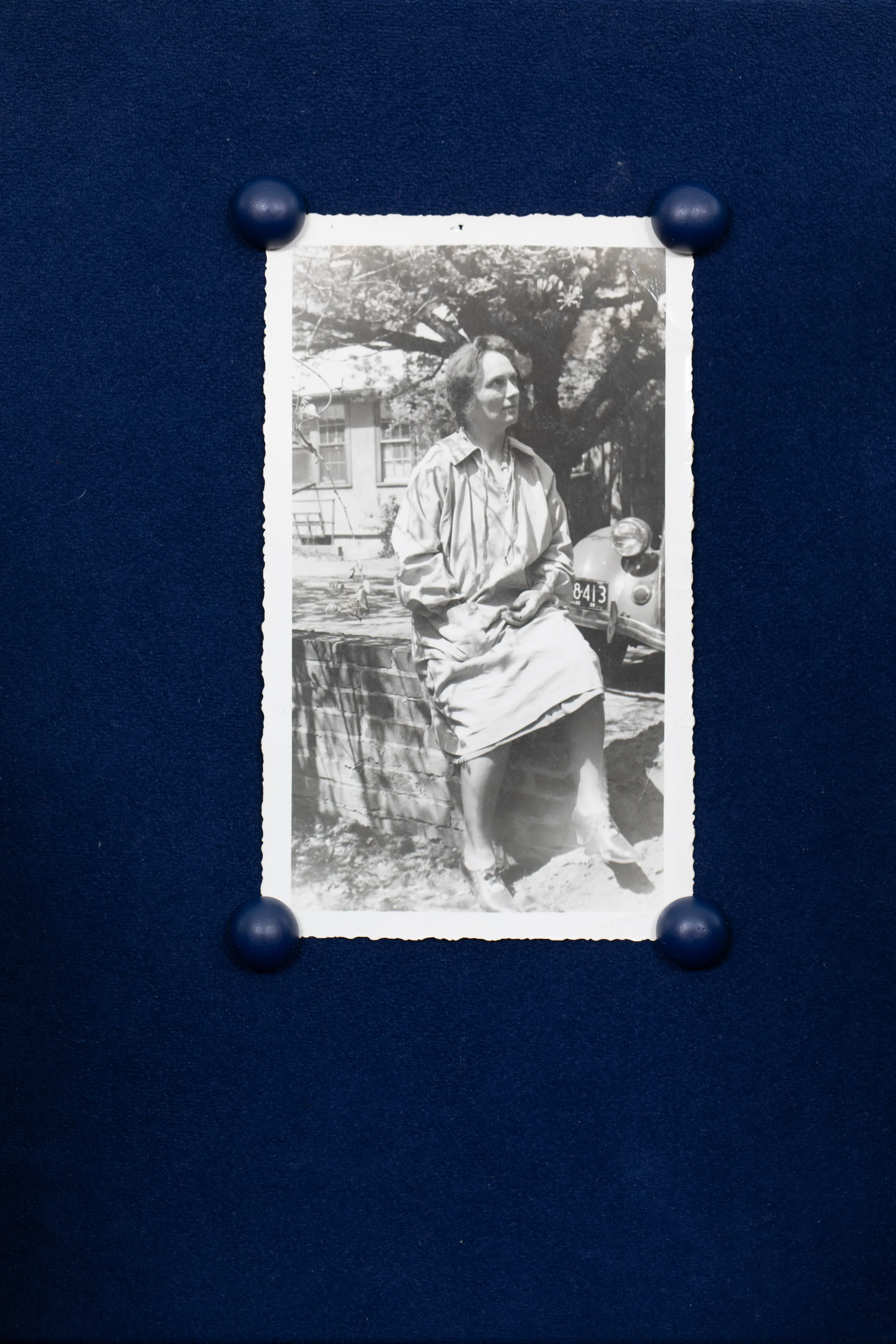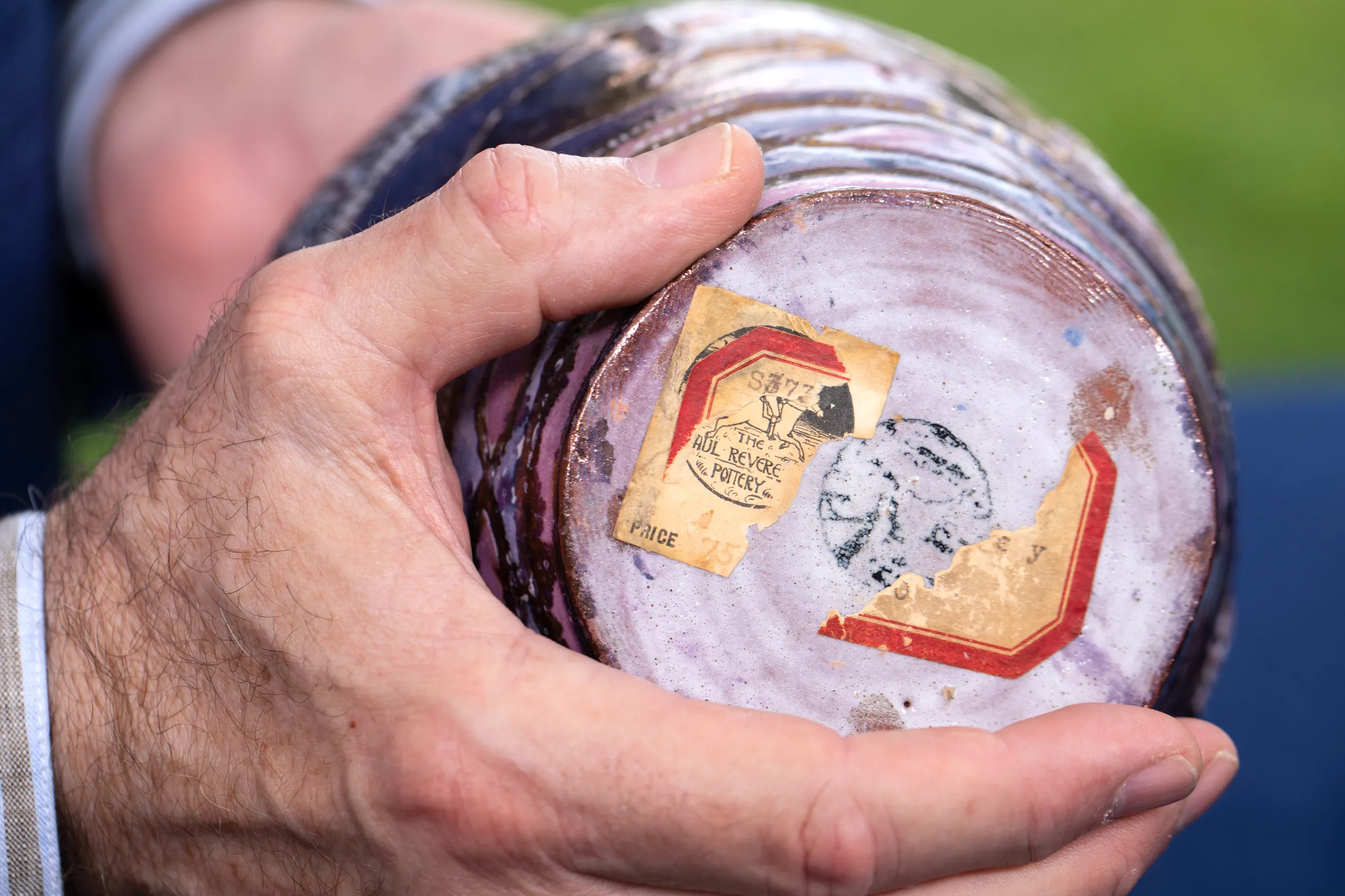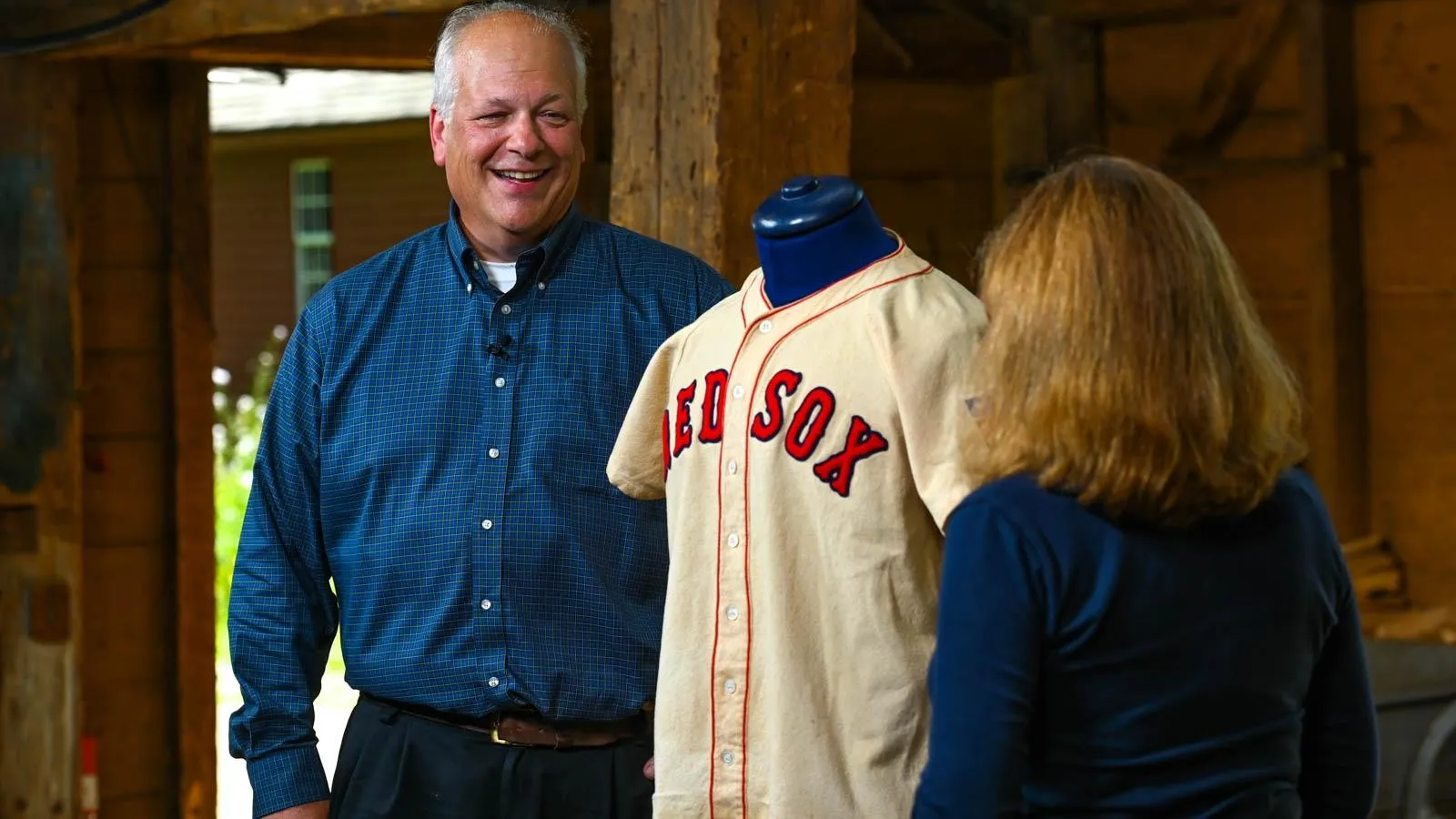Paul Revere Pottery Vases, ca. 1925
GUEST: My grandmother worked for the S.E.Gs., the Saturday Evening Girls. That was a, a group of young immigrant women, and she was one of them. She, she immigrated from Lithuania...
APPRAISER: Uh-huh.
GUEST: ...when she was about ten, at the turn of the century. And she had these pots and many, many others that I have at home. She loved it.
APPRAISER: And this is her, right here?
GUEST: Uh, yes, it is. That's right in front of the, um, pottery that moved from the North End to Brighton.
APPRAISER: Tell me about the history of the Saturday Evening Girls.
GUEST: They were these group of young immigrant women who got together initially, I think, as a reading group, to learn about books and culture. And they went on outings, practiced their English. She just said they were all so glad to be there, and to be together, and they all supported each other.
APPRAISER: It's interesting, because we've come to think of them as being pottery decorators.
GUEST: Right, that's ama...
APPRAISER: But they really didn't start that way.
GUEST: Yeah, it was only one of the things they did.
APPRAISER: Uh-huh.
GUEST: But it was a really important thing, because that was the thing they did to make money. She was a single parent. Her husband was, um, very ill and hospitalized.
APPRAISER: Mm-hmm.
GUEST: And so she had to raise two daughters. One was my mother. And she went to work for the Saturday Evening Girls, and she was a member. And then she decided she needed to make some money. And so they hired her as a bookkeeper, and she ran the office, and, um, she continued to work there for years, and she just loved it.
APPRAISER: The company was called the Paul Revere Pottery. They were in the North End of Boston, but it was really known as Saturday Evening Girls. S.E.G., Paul Revere, 1908 to 1942. It's, uh, very progressive, uh, workplace meant for, uh, young women in the North End...
GUEST: Yeah.
APPRAISER: ...who had terrible working conditions, normally.
GUEST: Yeah.
APPRAISER: But at S.E.G., at Paul Revere, eight-hour workdays rather than ten. They got a half a day off on Saturdays, which was revolutionary.
GUEST: Yeah.
APPRAISER: They had-- they were read Shakespeare...
GUEST: That's right, that's right.
APPRAISER: ...while they were working. The women who started Paul Revere Pottery were trying to bring these young women into the workforce, give them something of an education, acclimate them to American society. There are not artist initials on these pieces. Is there any chance she decorated these?
GUEST: It's possible. I like to think she did.
APPRAISER: Had I not turned these over, I would not have known these were Paul Revere Pottery. And the marking system changed from S.E.G. to Paul Revere sometime around 1925...
GUEST: Mm-hmm.
APPRAISER: ...where Paul Revere, which is the circle mark with Paul Revere riding a horse...
GUEST: Right, right, yeah.
APPRAISER: ...his famous ride, uh, usually in black ink on the bottom of the piece. They also had a die stamp mark showing the same designation. There's the original label...
GUEST: Right.
APPRAISER: ...with the Paul Revere Pottery mark and, and original price tag, the price of $75, which was a lot of money.
GUEST: Wow, that was a lot for them.
APPRAISER: So, this one only has the black stamp, which is hard to see, because this black glaze that's on the top...
GUEST: Mm-hmm.
APPRAISER: ...covers the bottom. I would date this one probably, uh, 1925, 1930.
GUEST: Mm-hmm.
APPRAISER: This one maybe about the same era. So a little later, but most unusual, 'cause this is not really what they did.
GUEST: Right.
APPRAISER: Okay? This, to me, looks like a piece of pottery that was made in England around 1880, 1890.
GUEST: Huh.
APPRAISER: It's more Pre-Raphaelite and Romantic in its iconography.
GUEST: Yeah.
APPRAISER: This piece, which is pretty fabulous, I mean, when I looked at it, after knowing what it was, I recognized the green glaze and the black glaze.
GUEST: Mm-hmm.
APPRAISER: Those are glaze that they used at the Paul Revere Pottery.
GUEST: Right.
APPRAISER: But not in this style.
GUEST: This looks like a piece of, of modern pottery made between World War I and World War II, either in Belgium or Germany. It doesn't look like a piece of Paul Revere made in Boston. So, why do they look like this? I think what we saw happen in all the art potteries from the first quarter of the, of the 20th century, either had to adapt...
GUEST: Mm-hmm.
APPRAISER: ...or they were gonna die. So what I'm seeing is that, instead of looking internally, and picking their own path to decorating ceramics...
GUEST: Mm-hmm.
APPRAISER: ...they started to look outward after World War I...
GUEST: Huh, interesting, yeah.
APPRAISER: ...and looking to England in, in this case, and looking to Germany or Belgium, in the case of this one-- most unusual.
GUEST: It is.
APPRAISER: This, by the way, appears to be, uh, hand-thrown.
GUEST: Yeah, yeah.
APPRAISER: This one is definitely cast. This even has a bit of a, a nacreous or iridescent finish to it. I don't believe the design is cast. I believe it's built up or carved back. So someone spent a tremendous amount of time on this, which is why there's a $75 price tag on it.
GUEST: Right.
APPRAISER: So, in terms of value, vases in and of themselves are difficult enough to find. To find them decorated like this, this is unprecedented. So I would say, at auction, I would estimate this piece for between $5,000 and $7,000.
GUEST: Wow.
APPRAISER: And I think, also at auction, I would have to say the same, $5,000 to $7,000.
GUEST: Wow, that's surprising.
APPRAISER: It's not what people look for. But if, but if, if this had...
GUEST: Amazing.
APPRAISER: ...a landscape design going around it, which is what they're known for...
GUEST: Right, right.
APPRAISER: ...this would be, this would be maybe a six-figure piece, so...
GUEST: Yeah. Well, that's great-- that's amazing. These are things I just played with, so...
(both laugh)
GUEST: And put dried flowers in them. So that's wonderful, thank you.

$10,000 - $14,000 Auction
Photos


Featured In

episode
Old Sturbridge Village, Hour 1
See marvelous Massachusetts treasures, including the season’s top find worth $500,000!
Traditional Crafts

appraisal

appraisal

appraisal

appraisal
Understanding Our Appraisals
Placeholder





